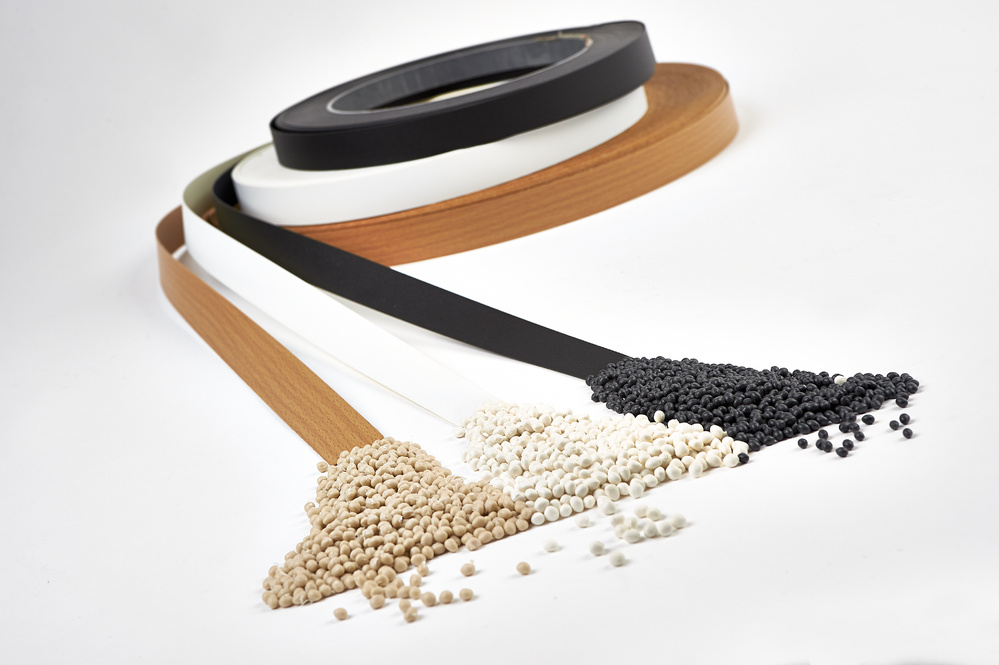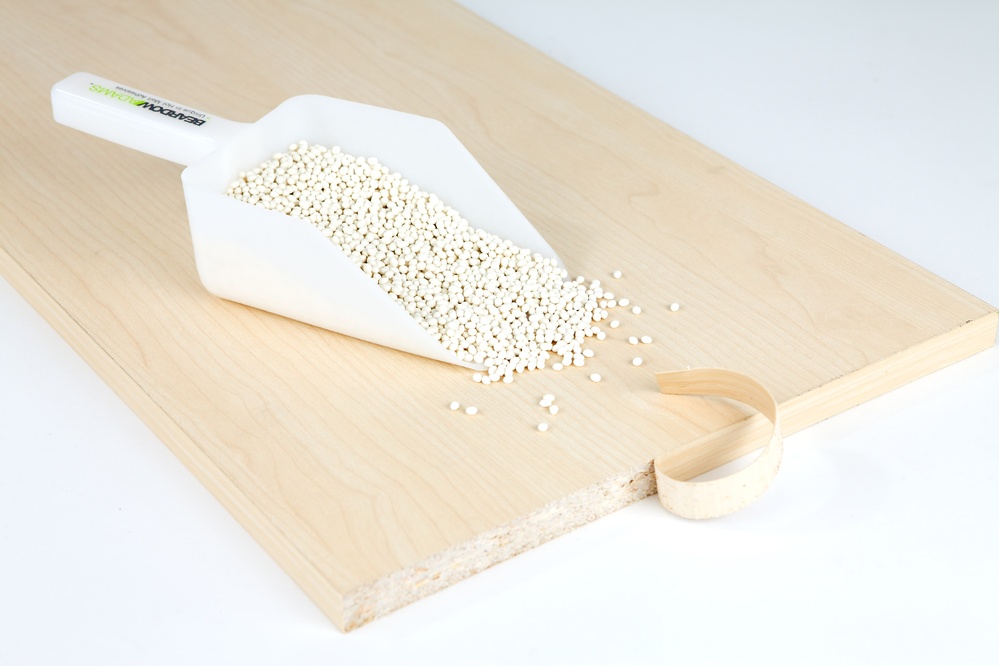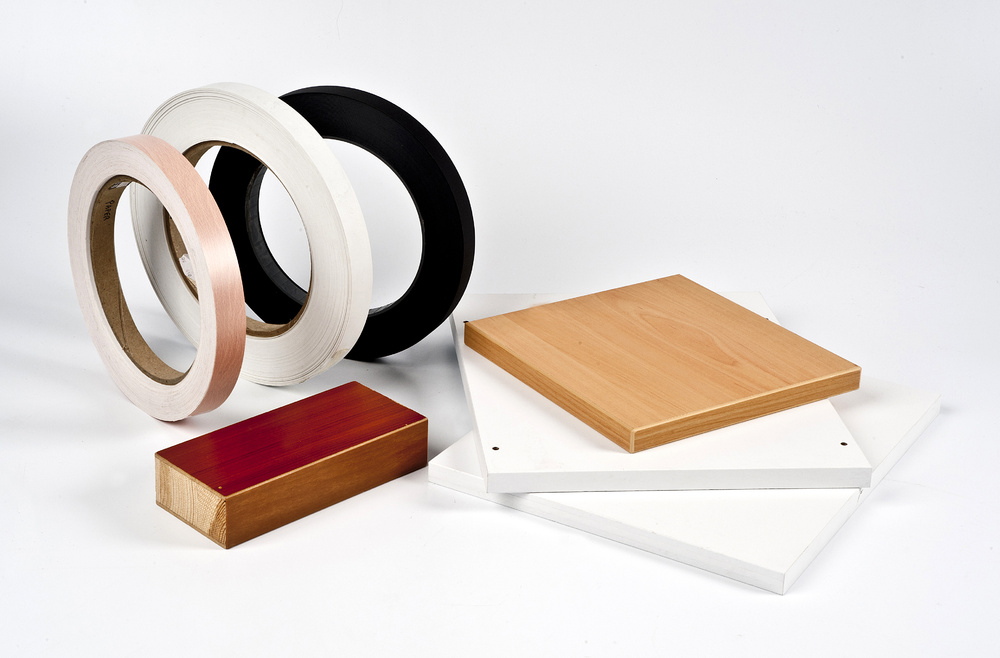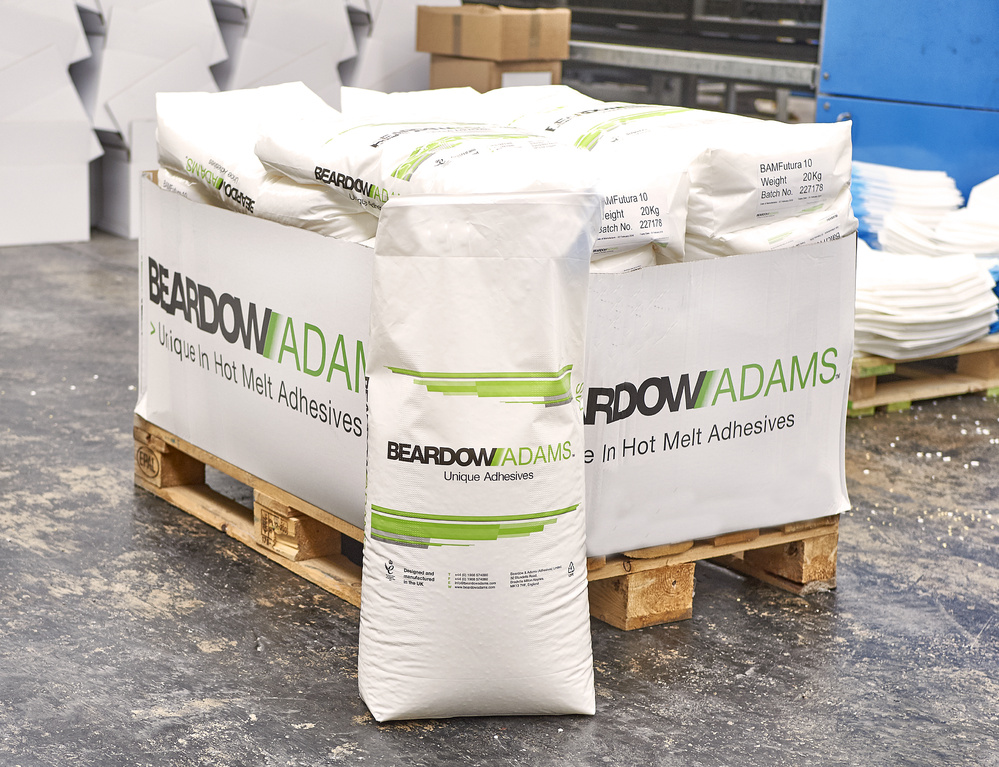Which edge banding adhesive to choose
- Edge banding adhesive for furniture
- Properties of edge banding adhesives
- Which adhesive is best for edge banding?
- Recommendations for using the ТМ Beardow Adams hot melt adhesive for edge banding
- Causes of problems when gluing an edge band
- Purchasing an edge banding hot melt adhesive
When making furniture, edge banding plays a big part. An edge band is applied to an article to make it visually appealing, protect it from ingress of moisture and for mold control. Apart from this, furniture needs edge bands to prevent the release of toxic vapours from the formaldehyde resins in the chip board composition to the environment.
Furniture edge bands are a material in the form of a strip or band used for finishing edges of parts. An edge band is most often chosen to match the furniture colour. The choice of the edge banding material depends on how a finished item will be used and on the equipment used for working the parts. The furniture industry uses PVC edge bands, melamine-impregnated paper strips, АВС plastic, veneer and acrylic edging materials. In general, manufacturers prefer PVC edging strips due to their durability

Edge banding adhesive for furniture
Edge bands are glued with a hot melt adhesive, which is applied with special equipment.
Hot melt adhesives are ideal for edging furniture with edge bands made of different materials. This is because their bonding is moisture and heat resistant, and the adhesives have a short setting time and good fluidity.
The hot melt adhesive is in the form of granules that melt at a definite temperature. The ethylene vinyl acetate polymer in the adhesive’s composition imparts fluidity to the adhesive and strong bonding.
Properties of edge banding adhesives
Depending on the working temperature, adhesives for edging banding fall into the categories:
- Low-temperature hot melt adhesives are applied at temperatures from 120 ℃. They are used in machines with both manual and automatic workpiece feed. The key features of such adhesives are plasticity, heat resistance and high setting efficiency.
- High-temperature hot melt adhesives are applied at temperatures from 180 ℃. They are used in edge banding and finishing machines with automatic workpiece feed. High-temperature hot melt adhesives feature fine working characteristics and a high melt rate.
As to their composition, hot melt adhesives are of the following types:
- Filled hot melt adhesives for gluing PVC edging bands onto chip boards with a porous structure. These high-viscosity adhesives fill in wood pores and adhere better to the surface.
- Non-filled hot melt adhesives are transparent, consumption-saving and form a thin adhesive bond. These adhesives are less dense than filled ones and have better adhesion properties.

A hot melt adhesive consumption is determined by its volume. With equal weight, the volume of a filled hot melt adhesive is smaller than that of a non-filled one because filled adhesives have a higher density than non-filled ones do.
This means that, with an equal volume of an applied adhesive, non-filled adhesives provide better adhesion than filled ones do because they contain only active components. In many cases, the better adhesion of non-filled adhesives means that the weight of the applied adhesive can be reduced, thus saving on consumption.
Applied non-filled adhesives are colourless; therefore, they are used for gluing edging bands of any colour, making it needless to change the adhesive colour in each specific case.
Which adhesive is best for edge banding?
If during use an edging band stays securely attached to an article for a long time, this is an indicator of the quality of a hot melt adhesive and a properly executed gluing process. Specialists in the furniture industry prefer edge banding hot melt adhesives made by the English company Beardow Adams. Hot melt adhesives ТМ ВАМ and ВАМFutura are used for edge banding different cabinet-type furniture, kitchen worktops, doors and other articles.
Beardow Adams hot melt adhesives are used in the following processes:
- Edge banding and softforming with the use of composite materials: PVC, high-pressure laminated board, wooden edge bands, solid wood, etc.
- Profile wrapping of MDF and chip board with wooden veneer and PVC materials.
- Gluing V-shaped grooves.
- Gluing upholstery and foamed materials.
- Laminating top surfaces.

Advantages of Beardow Adams hot melt adhesives for edge banding and softforming:
- Bond the majority of edge band materials.
- Are applied without caking and forming a gel and threads, and do not smudge.
- Are consumption-saving.
- Superior performance.
- Are elastic.
- Fine heat resistance.
Beardow Adams, based on their proprietary unique production process, produces a range of non-filled hot melt adhesives BAMFutura for furniture. The adhesives are neatly applied onto a surface and demonstrate enhanced performance as compared to EVA adhesives.
The technology uses special raw materials, enabling to develop products that improved the quality of hot melt adhesives used in woodworking.
Recommendations for using the ТМ Beardow Adams hot melt adhesive for edge banding
- The hot melt adhesive for edge banding is applied onto a chip board or MDF with vertical gluing rollers. The equipment speed is up to 90 m/min when gluing melamine and veneer and lower when gluing intricate-shape edge bands.
- The adhesive temperature in the machine must be controlled. Maintain temperature conditions at a level specified by the producer. A low temperature shortens the adhesive setting time, and a very high one degrades gluing properties.
- The bonded surface must be dry to avoid gluing defects. Prior to being used, the adhesive is tested to account for production conditions and features.

Causes of problems when gluing an edge band
After being glued, the edge band easily separates from the panel edge or unexpectedly rises under the action of trimming blades.
- The bond line is very thin.
- Cold and moist materials are used.
- Low temperature of the gluing roller.
- Low adhesive feed rate.
- Low ambient temperature and temperature of glued materials.
- Insufficient adhesive melt rate.
The hot melt adhesive becomes smudged along the glued edge.
- Excessive amount of applied adhesive.
- Improper operation of the edge trimming machine.
- The hot melt adhesive used is unsuitable for the specific application.
One side of the edge is glued better than the other one.
- The panel edges are not arranged at a right angle to the roller.
- The adhesive spreads over the surface unevenly due to foreign matter between the roller and the metering blade.
Purchasing an edge banding hot melt adhesive
Lux-X LLC is the sole official representative in Ukraine of the English Beardow Adams Company – the producer of hot melt adhesives. The quality of the adhesives is confirmed by international certificates and long-term collaboration of leading furniture-making companies with our company.
With orders from Lux-X LLC of hot melt adhesives starting from 20 kg and more, delivery for you is free-of-charge in Ukraine.
To be sure that your choice of an adhesive is correct, our specialists visit enterprises to assist in conducting tests in your industrial production conditions.
To get consultations on prices and the product range and to purchase an adhesive click on the “Order” button or call us by +38 (057) 766-06-36, and our managers will call back as soon as possible.






